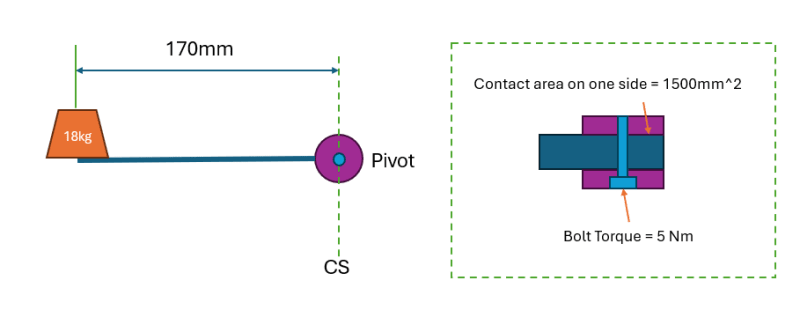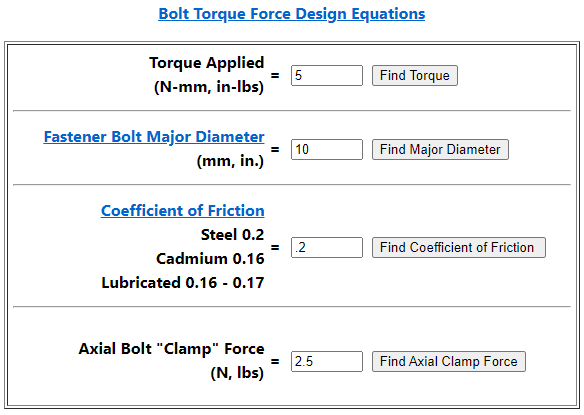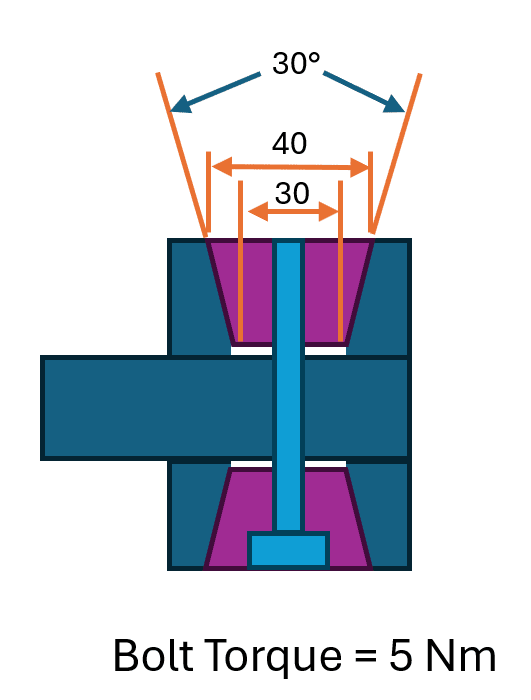Hi guys, I am trying to design a brake/locking mechanism to hold up a weight, here is some background; I have a weight 18kg, 170mm away from the pivot point on an arm. A brake compresses the arm at the pivot point. This consist of a M10 bolt compressing a surface area of 1500mm^2 on each side of the arm. The torque I apply to the bolt/brake is 5 N/m. The CoF is 0.3. Will the brake hold up the weight? I am struggling to find the correct formula for this calc online. I know the weight will produce a torque around the pivot point of approx 30Nm. The clamping force I think would then be Torque/(CoF x bolt diameter) = 2.5 Nm. Is this correct?
On a different note, why does a taper help with these kind of friction brakes? I've seen it mentioned online but I'm not sure why. If the contact surface was at a 15° angle what would this do to the calculation?
On a different note, why does a taper help with these kind of friction brakes? I've seen it mentioned online but I'm not sure why. If the contact surface was at a 15° angle what would this do to the calculation?



